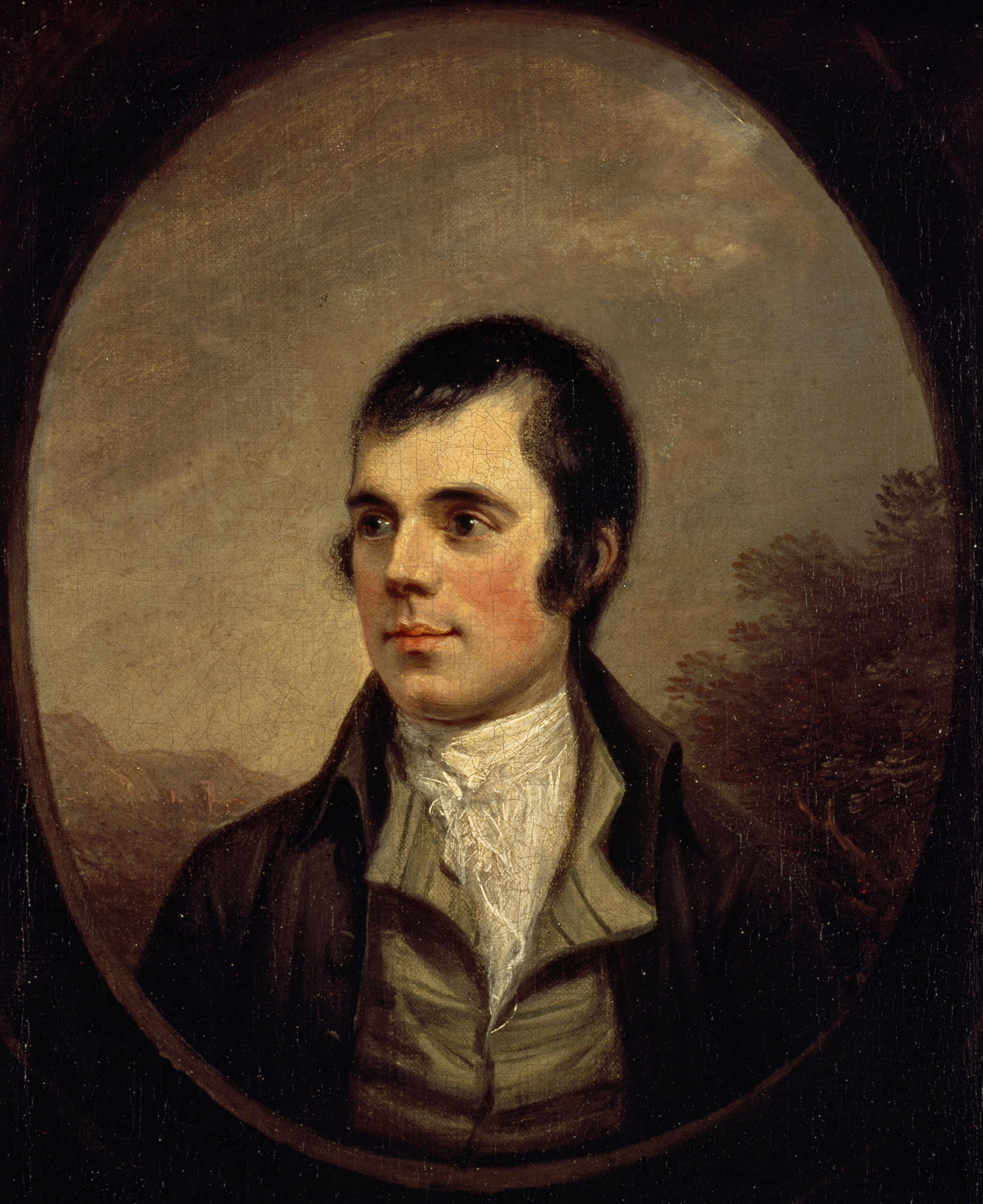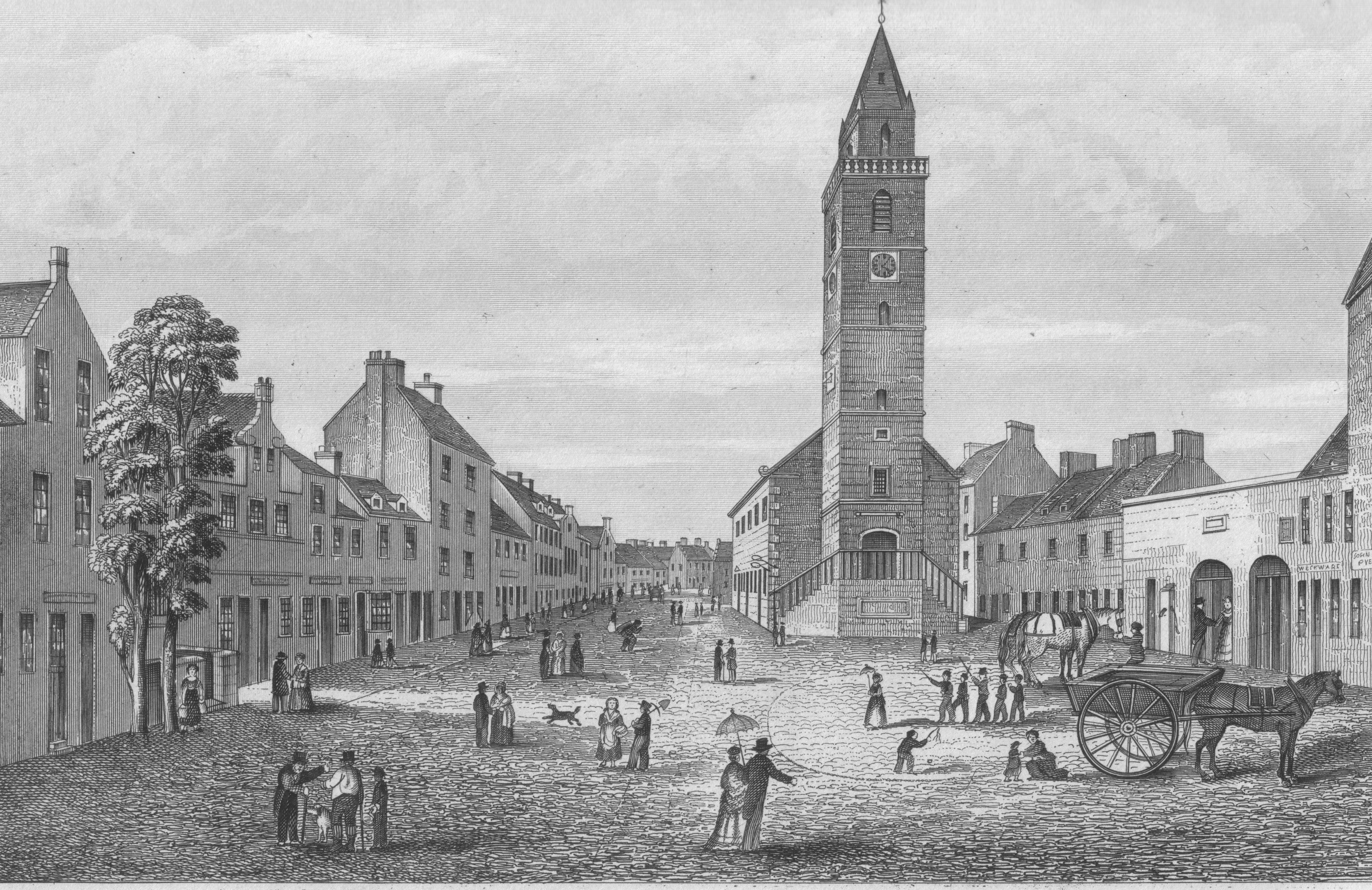|
Jenny Clow
Janet, Jennie or Jenny Clow was a domestic servant to Mrs Agnes Maclehose, née Craig (1759-1841), the Clarinda to Robert Burns' Sylvander.Burns Encyclopedia Retrieved : 2012-02-26 She was the daughter of Andrew (or AlexanderWestwood, Page 138) Clow and Margaret Inglis from and was the youngest of eight children.Rootsweb Retrieved : 2012-02-26 Her mistress sent her to deliver a letter to the poet and he seduced her. Retrieved : 2012-02-26 ...
|
Newburgh, Fife
Newburgh is a royal burgh and parish in Fife, Scotland, at the south shore of the Firth of Tay. The town has a population of 2,171 (in 2011),Census of Scotland 2011, Table KS101SC – Usually Resident Population, publ. by National Records of Scotland. Web site http://www.scotlandscensus.gov.uk/ retrieved March 2016. See “Standard Outputs”, Table KS101SC, Area type: Civil Parish 1930 which constitutes a 10% increase since 1901 when the population was counted at 1,904 persons. The town has a long history of fishing and industrial heritage. Lindores Abbey lies at the eastern edge of the town. History In 1266 Newburgh was granted burgh status by Alexander III of Scotland, King Alexander III, as a burgh belonging to the Abbot of Lindores. In 1600, Newburgh was given to Patrick Leslie, 1st Lord Lindores, son of the Earl of Rothes. In 1631, Newburgh was made a Royal Burgh by King Charles I of England, Charles I. Since the Second World War many new houses have been built in Newbu ... [...More Info...] [...Related Items...] OR: [Wikipedia] [Google] [Baidu] |
Alison Begbie
Alison Begbie, Ellison Begbie or Elizabeth Gebbie (1762–1823), is said to have been the daughter of a farmer, born in the parish of Galston, and at the time of her courtship by Robert Burns she is thought to have been a servant or housekeeper employed at Carnell House, then known as Cairnhill, on the River Cessnock, situated about 2 miles from Loudoun Mill. It is thought that Burns's youngest sister Isobel Burns confused her name, which was really Elizabeth Gebbie.Mackay, Page 88 Life and character Alison may have lived at Old Place, now Shawsmill Farm, the daughter of a tenant-farmer.Mackay, Page 84 Burns was living at Lochlea Farm at this time.Robert Burns Encyclopedia Retrieved : 9 February 2012 Although not a beauty, she had many charming qualities, inspired by an education somewhat beyond anything that Burns had ever encounte ... [...More Info...] [...Related Items...] OR: [Wikipedia] [Google] [Baidu] |
Scottish Domestic Workers
Scottish usually refers to something of, from, or related to Scotland, including: *Scottish Gaelic, a Celtic Goidelic language of the Indo-European language family native to Scotland *Scottish English *Scottish national identity, the Scottish identity and common culture *Scottish people, a nation and ethnic group native to Scotland * Scots language, a West Germanic language spoken in lowland Scotland *Symphony No. 3 (Mendelssohn), a symphony by Felix Mendelssohn known as ''the Scottish'' See also *Scotch (other) *Scotland (other) *Scots (other) *Scottian (other) *Schottische The schottische is a partnered country dance that apparently originated in Bohemia. It was popular in Victorian-era ballrooms as a part of the Bohemian folk-dance craze and left its traces in folk music of countries such as Argentina (Spanish ... * {{disambiguation Language and nationality disambiguation pages ca:Escocès ... [...More Info...] [...Related Items...] OR: [Wikipedia] [Google] [Baidu] |
18th-century Scottish Women
The 18th century lasted from 1 January 1701 (represented by the Roman numerals MDCCI) to 31 December 1800 (MDCCC). During the 18th century, elements of Enlightenment thinking culminated in the Atlantic Revolutions. Revolutions began to challenge the legitimacy of monarchical and aristocratic power structures. The Industrial Revolution began mid-century, leading to radical changes in human society and the environment. The European colonization of the Americas and other parts of the world intensified and associated mass migrations of people grew in size as part of the Age of Sail. During the century, slave trading expanded across the shores of the Atlantic Ocean, while declining in Russia and China. Western historians have occasionally defined the 18th century otherwise for the purposes of their work. For example, the "short" 18th century may be defined as 1715–1789, denoting the period of time between the death of Louis XIV of France and the start of the French Revolut ... [...More Info...] [...Related Items...] OR: [Wikipedia] [Google] [Baidu] |
1792 Deaths
Events January–March * January 9 – The Treaty of Jassy ends the Russian Empire's war with the Ottoman Empire over Crimea. * January 25 – The London Corresponding Society is founded. * February 18 – Thomas Holcroft produces the comedy ''The Road to Ruin (play), The Road to Ruin'' in London. * February 20 ** The Postal Service Act, establishing the United States Postal Service, United States Post Office Department, is signed by President George Washington.''Harper's Encyclopaedia of United States History from 458 A. D. to 1909'', ed. by Benson John Lossing and, Woodrow Wilson (Harper & Brothers, 1910) p169 ** Parliament House, Dublin catches fire during a legislative session. "Although in imminent danger of the roof falling in," it is noted later, "the House did not adjourn until a proper motion had been put and carried in the affirmative.""Fires, Great", in ''The Insurance Cyclopeadia: Being an Historical Treasury of Events and Circumstances Connect ... [...More Info...] [...Related Items...] OR: [Wikipedia] [Google] [Baidu] |
1760s Births
Year 176 ( CLXXVI) was a leap year starting on Sunday of the Julian calendar. At the time, it was known as the Year of the Consulship of Proculus and Aper (or, less frequently, year 929 ''Ab urbe condita''). The denomination 176 for this year has been used since the early medieval period, when the Anno Domini calendar era became the prevalent method in Europe for naming years. Events By place Roman Empire * November 27 – Emperor Marcus Aurelius grants his son Commodus the rank of ''Imperator'', and makes him Supreme Commander of the Roman legions. * December 23 – Marcus Aurelius and Commodus enter Rome after a campaign north of the Alps, and receive a triumph for their victories over the Germanic tribes. * The Equestrian Statue of Marcus Aurelius is made. It is now kept at Museo Capitolini in Rome (approximate date). Births * Fa Zheng, Chinese nobleman and adviser (d. 220) * Liu Bian, Chinese emperor of the Han dynasty (d. 190) * Ma Chao, Chinese general ... [...More Info...] [...Related Items...] OR: [Wikipedia] [Google] [Baidu] |
Kate Kemp
Kate Kemp of Barskimming lived with her father at the Bridge House on the northern side of the single-span Barskimming Old Bridge (Barskimming Auld Brig), River Ayr, Scotland. Both Robert Burns and James Andrew, the miller at Barskimming Mill, had a romantic interest in her, and one visit led to the composition of the poem and dirge "Man's inhumanity to man, Man was made to Mourn". Life and character Her father may have been the James Kemp of Barskimming who is recorded in the Stair, East Ayrshire, Parish of Stair as the father of William Kemp, who was baptised on 19 August 1766 being around eighteen in 1784. No other "Kemp" births are recorded around this time; however, in 1781, a Margaret Kemp from Mauchline came to live in the parish of Stewarton with a "clearance certificate" of good character. Kate lived in a sylvan and rural location at the old Barskimming Bridge or Kemp's House (NS4906525460) that lay on the north or Mauchline side of the road to Stair about two miles so ... [...More Info...] [...Related Items...] OR: [Wikipedia] [Google] [Baidu] |
Elizabeth Paton
Elizabeth "Betsey" Paton or later Elizabeth Andrew of Lairgieside (1760 – c. 1799) was the daughter of James Paton and Eleanor Helen Paton of Aird Farm, Crossroads, Ayrshire. Following an affair with Robert Burns she gave birth on 22 May 1785 to his first child, Elizabeth "Bess" Burns, the ''"Dear-bought Bess"'', who was baptised when only two days old. Betsey met Robert Burns when she was employed as a servant girl at the Burns's Lochlea FarmHecht, Page 54 during the winter of 1783–84.Burns Encyclopedia Retrieved : 13 February 2012 When the Burns family moved to Mossgiel Farm in March 1784, Betsey returned to her own home, where Robert Burns visited her later that year. In 1786, Elizabeth made a claim on Burns, but accepted a settlement of twenty pounds which the poet paid out of the profits of th ... [...More Info...] [...Related Items...] OR: [Wikipedia] [Google] [Baidu] |
Ann Park
Helen Anne Park,Burns Encyclopedia Retrieved 27 February 2012 known as Anna Park (used throughout for consistency) or Ann Park, was born in 1769 at , Scotland. She was thought to have been the daughter of Joseph Park, an Edinburgh coachmaker, and Jean Dick. However, recent researchGreenshields, p.22 has shown that she was actually the daughter of Walter Park and Elizabeth Blacklock. Margaret Ewing née Park, a onetime landlady of 'The Globe', was her sister and she worked there as a barmaid. Anna bore the poet an illegitimate chi ... [...More Info...] [...Related Items...] OR: [Wikipedia] [Google] [Baidu] |
Peggy Thompson
Margaret "Peggy" Thompson, later Margaret Neilson, was the housekeeper at Coilsfield House or Montgomery Castle in Ayrshire, Scotland. She married John Neilsen of Monyfee. The couple lived at Minnybae Farm near Kirkoswald. She was the 'charming Fillette' of Robert Burns fame and her husband was an old acquaintance of the poet. It was on 23 August 1775 that she was first seen in her garden by Burns when he was out at noon in the school's backyard measuring the altitude of the sun. Peggy in later life moved to Ayr where her children still lived in 1840. Association with Robert Burns As stated Burns first met her when he was studying at Kirkoswald school in the summer of 1775 under the schoolmaster Hugh Rodger (1726-1797). She lived with her parents, next door to the school, and Robert Burns recorded that she ''"over-set my trigonometry, and set me off in a Tangent from the sphere of my studies"''. Robert Burns met Peggy Thompson frequently at Tarboth or Tarbolton Mill and the ... [...More Info...] [...Related Items...] OR: [Wikipedia] [Google] [Baidu] |
Nelly Kilpatrick
Nelly or Nellie Kilpatrick, Helen Kilpatrick or later Nelly Bone (1759–1820). Nelly (usually short for "Helen") was possibly Robert Burns's first love and muse as stated by Isabella Burns. Early life Nelly is usually used as a nickname for "Helen." Some authors give her birth year as 1760. Nelly may have been the daughter of John Kilpatrick,Mackay, page 52 the miller and his wife Jane Reid of Perclewan Mill near Dalrymple.Burns Encyclopedia Retrieved : 2012-02-06 She was baptised on 1 March 1759. Life and character He stated that she had a sweet voice and was wont to sing songs as she worked in the fields.[...More Info...] [...Related Items...] OR: [Wikipedia] [Google] [Baidu] |
Jean Gardner
Jean Gardner or later Jean Hill, was ''"a young woman of very surpassing beauty,"'' with a ''"light foot and an ensnaring eye,"'' Retrieved : 7 November 2012 but she may have been thirteen years older than Robert Burns, with whom she was on friendly or 'intimate' terms. A strong local tradition in Irvine, North Ayrshire, Irvine links her with Burns, however, no contemporary written evidence records this relationshipMackay, Page 107 and Burns himself, was not thought to have written about her, other than a disputed use of her given name as the 'darling Jean' of Burns's 'Epistle to Davie', and most recent writers have considered the reference to be to Jean Armour. Life and character [...More Info...] [...Related Items...] OR: [Wikipedia] [Google] [Baidu] |




